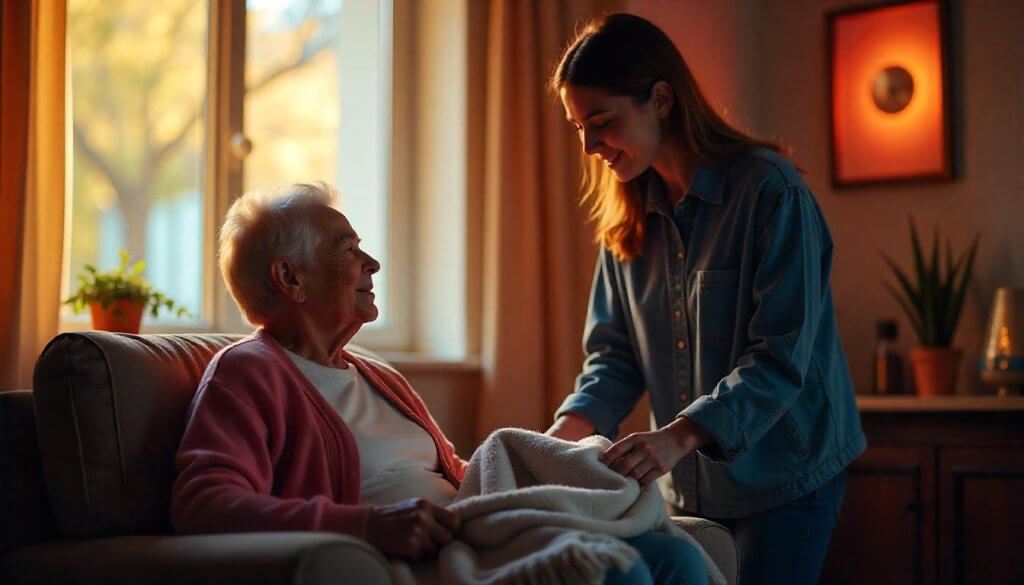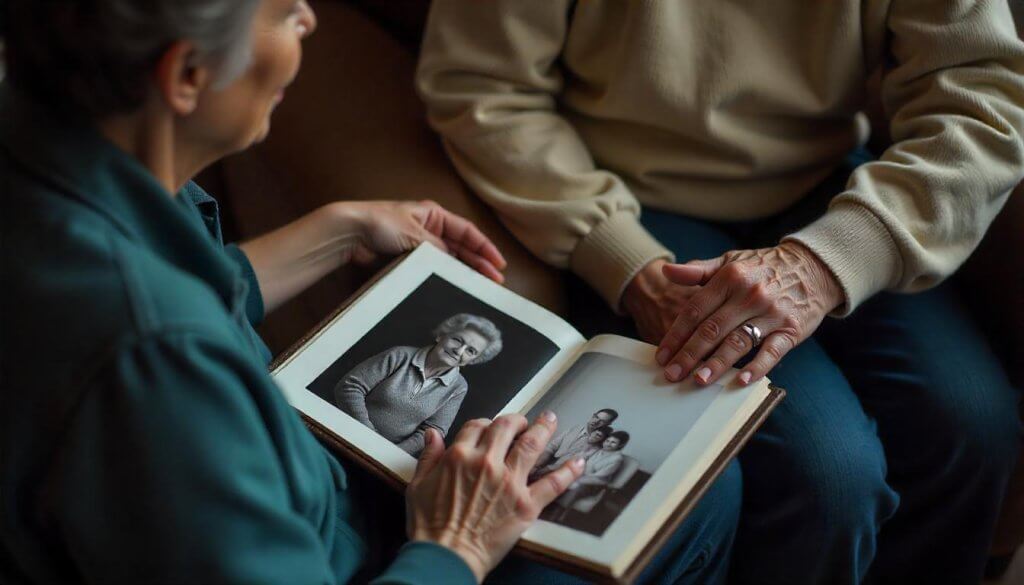En el viaje de una vida compartida, las parejas buscan diversas formas de profundizar en su conexión y encontrar la satisfacción mutua. Aunque a menudo nos vienen a la mente las aficiones compartidas y los viajes, un camino cada vez más popular y profundamente gratificante es el del servicio. Para voluntariado conjunto parejasEl hecho de retribuir a la comunidad ofrece una oportunidad única para reforzar sus lazos, descubrir nuevas facetas de cada uno y crear un impacto positivo duradero más allá de su círculo inmediato.
De hecho, más allá de los objetivos individuales, el voluntariado conjunto permite a los miembros de la pareja alinear sus valores, apoyar causas que les preocupan y experimentar la alegría de la contribución colectiva. Este propósito compartido puede insuflar nueva vida a una relación. Proporciona una nueva perspectiva de los retos de la vida y refuerza el sentido del trabajo en equipo. Este artículo explora los innumerables beneficios del servicio compartido para las parejas. Ofrecerá consejos prácticos para encontrar las oportunidades adecuadas, navegar juntos por la experiencia y, en última instancia, transformar las intenciones individuales en una asociación poderosa y benévola.
Las innegables ventajas del servicio conjunto
Participar en el servicio comunitario en pareja ofrece un conjunto único de ventajas que pueden enriquecer significativamente una relación. Estos beneficios se extienden más allá de la buena acción inmediata, fomentando una conexión más profunda y el crecimiento personal.
En primer lugar, voluntariado conjunto parejas cultivar un profundo sentido de propósito compartido. Cuando los socios se unen en torno a una causa común, desarrollan un aprecio más profundo por la compasión y el compromiso del otro. Esta misión compartida eleva su relación más allá de la rutina diaria, creando un poderoso vínculo basado en valores mutuos. Fomenta la sensación de que están marcando la diferencia en el mundo como equipo.
Además, el voluntariado es una oportunidad única para que las parejas se vean con otros ojos. Puedes observar las dotes de liderazgo de tu pareja en un banco de alimentos, su paciencia con los niños en un centro de acogida o su ingenio durante una limpieza medioambiental. Estas nuevas perspectivas pueden despertar la admiración y el respeto, reavivando el aprecio por cualidades que podrían darse por sentadas. Suelen deparar sorpresas agradables y nuevas perspectivas sobre el carácter de la persona amada.
Además, el servicio compartido refuerza las habilidades de comunicación. Al trabajar por un objetivo común, las parejas deben comunicarse eficazmente, delegar tareas y resolver problemas juntos. Esta aplicación práctica de la comunicación en un entorno no estresante se traduce positivamente en otras áreas de su relación. Aprenden a coordinarse mejor y a apoyarse mutuamente en sus esfuerzos. Las emociones positivas derivadas de ayudar a los demás también pueden aumentar la satisfacción general de la relación, haciendo que la pareja se sienta más conectada y satisfecha con su vida en común.
Encontrar la pasión compartida: Elegir la oportunidad adecuada
El vasto mundo del voluntariado ofrece innumerables posibilidades de servicio. Encontrar una oportunidad que se adapte a ambas partes es esencial para que la experiencia sea realmente satisfactoria.
Considere la posibilidad de empezar con una conversación sobre las pasiones individuales. ¿Qué causas les atraen a cada uno? ¿Les preocupa mucho el bienestar de los animales, la protección del medio ambiente, la educación o el apoyo a las poblaciones vulnerables? Hablar de estas inclinaciones personales es el primer paso para identificar un área de interés común. Tal vez a uno de los miembros de la pareja le gusten los animales, mientras que al otro le gusta pasar tiempo al aire libre. En este caso, el voluntariado en una granja de rescate de animales podría ser una combinación perfecta.
A continuación, busque organizaciones locales que coincidan con sus intereses. Muchas organizaciones sin ánimo de lucro tienen páginas web en las que detallan su misión y sus necesidades de voluntariado. Busca organizaciones que ofrezcan funciones variadas, para que ambos puedan contribuir de la forma que mejor se adapte a sus puntos fuertes. Algunos lugares necesitan ayuda con tareas administrativas, mientras que otros necesitan asistencia práctica o apoyo en la recaudación de fondos. Además, considere el compromiso de tiempo. ¿Busca un acto puntual, un compromiso semanal o algo más flexible? Ser realista sobre su disponibilidad garantiza que el voluntariado se convierta en una alegría, no en una carga.
Por último, piense en el entorno. ¿Prefiere trabajar en interiores o al aire libre? ¿Le gusta relacionarse con mucha gente o prefiere un trabajo más tranquilo y orientado a las tareas? Responder a estas preguntas le ayudará a afinar su búsqueda. Cuando ambas partes se sienten realmente comprometidas con la causa y cómodas con el puesto, su compromiso es mayor. voluntariado conjunto parejas experiencia será más gratificante y sostenible.
Consejos prácticos para un voluntariado conjunto eficaz
Una vez que identifique una oportunidad, la aplicación de algunas estrategias prácticas mejorará su experiencia como voluntariado conjunto parejas. Una planificación eficaz garantiza que ambas partes se sientan valoradas y comprometidas.
Lo primero y más importante es comunicar claramente las expectativas antes de empezar. Hablen de lo que cada uno espera obtener de la experiencia y de cómo se imaginan sus papeles. Así se evitan malentendidos y se garantiza que ambos están de acuerdo. Tal vez una persona quiera dirigir, mientras que la otra prefiere seguir instrucciones. Hablarlo de antemano puede evitar roces.
A continuación, afronte la tarea como un equipo. Apóyense mutuamente, compartan responsabilidades y celebren juntos las pequeñas victorias. Si uno de los dos se siente abrumado, el otro puede ayudarle. Esto refuerza vuestra colaboración y fortalece vuestro vínculo. Es una oportunidad para practicar la colaboración en el mundo real.
Además, acuérdate de informar después de cada sesión de voluntariado. Habla de tus experiencias, de lo que has aprendido y de cómo te has sentido. Este proceso os permitirá procesar las emociones, reforzar los sentimientos positivos y profundizar en la comprensión del impacto que estáis teniendo. También brinda la oportunidad de ofrecerse apoyo mutuo si a alguno de los dos le ha resultado difícil la experiencia.
Por último, equilibra tu voluntariado con otros aspectos de tu relación. Aunque retribuir es gratificante, no debe consumir todo tu tiempo libre. Asegúrese de que sigue teniendo tiempo para citas, aficiones y relajación. Mantener este equilibrio evita el agotamiento y hace que la experiencia sea agradable para ambos. Este enfoque sostenible ayuda a voluntariado conjunto parejas continuar su servicio a largo plazo.
Los beneficios inesperados: Más allá de la buena acción
Aunque el objetivo principal del voluntariado es devolver algo, los beneficios inesperados para la relación suelen ser profundos. Estas ventajas contribuyen significativamente a la felicidad general y la resiliencia de la pareja.
El voluntariado puede inyectar un nuevo sentido de la aventura y la novedad en una relación duradera. Empuja a las parejas fuera de su zona de confort y las expone a nuevos entornos y personas. Esta novedad compartida puede reavivar el entusiasmo y crear recuerdos únicos que conservarán durante años. Es una salida de la rutina que puede refrescar su vínculo.
Además, la participación en el servicio suele fomentar la empatía. Ser testigo de la lucha de los demás o de la dedicación de otros voluntarios puede hacer que comprendas mejor a la humanidad y reforzar tu gratitud por tus propias circunstancias. Esta mayor empatía se extiende a su pareja, fomentando una mayor compasión y comprensión en su relación. Se aprende a apreciar mejor el punto de vista del otro.
Además, proporciona una saludable dosis de perspectiva. Cuando te enfrentas a pequeños desacuerdos o molestias cotidianas, la experiencia de ayudar a los más necesitados puede poner tus propios retos en contexto. Te recuerda lo que de verdad importa, fomentando una perspectiva más resistente y apreciativa de tu relación de pareja. Esta nueva perspectiva puede generar menos conflictos y más armonía.
Por último, muchas parejas descubren que las experiencias de voluntariado compartido crean nuevos intereses comunes o profundizan en los ya existentes. Puede que descubran una pasión mutua por la jardinería a través de un proyecto de jardinería comunitaria o un amor compartido por el arte mientras ayudan en una galería. Estos nuevos intereses proporcionan nuevas vías de conexión y disfrute, enriqueciendo aún más su vida como pareja. voluntariado conjunto parejas.
Superar los retos y mantener el compromiso
Incluso con las mejores intenciones, voluntariado conjunto parejas pueden encontrar dificultades. Abordarlos de forma proactiva puede ayudar a mantener su compromiso.
Uno de los retos más comunes son los diferentes niveles de energía o preferencias. Puede que uno de los miembros de la pareja esté preparado para tareas prácticas y enérgicas, mientras que el otro prefiere funciones más tranquilas y entre bastidores. La comunicación abierta es la clave. Encuentre oportunidades que permitan a cada uno contribuir de un modo que le resulte cómodo y satisfactorio. A veces, esto puede significar trabajar en tareas diferentes dentro de la misma organización.
Otro posible obstáculo es la fatiga emocional o el agotamiento. Ser testigo de las dificultades puede ser emocionalmente agotador. Es importante reconocer estos sentimientos y hablar de ellos con tu pareja. Tomarse descansos, buscar el apoyo de otros voluntarios o rotar las tareas puede ayudar a gestionar el desgaste emocional. Recuerde que el autocuidado es crucial para un servicio sostenible.
Además, el conflicto de horarios puede dificultar el voluntariado conjunto. Sea flexible y creativo a la hora de encontrar oportunidades que se adapten a los calendarios de ambos. Incluso los compromisos breves y menos frecuentes pueden marcar la diferencia. La coherencia de la intención compartida es más importante que la cantidad de tiempo dedicado.
Por último, puede que algunas organizaciones no tengan estructuradas funciones de "pareja". En esos casos, puedes hacer voluntariado individualmente dentro de la misma organización o encontrar oportunidades más pequeñas e informales. Lo esencial es el compromiso compartido de retribuir, independientemente de la logística concreta. Previendo y abordando estas cuestiones, las parejas pueden mantener su entusiasmo y compromiso con el servicio.
Un legado de compasión
El acto de voluntariado conjunto parejas crea algo más que beneficios personales y relacionales: construye un poderoso legado. Cuando los hijos, los amigos y los miembros de la comunidad son testigos de una pareja que retribuye constantemente, se sienten inspirados. Este compromiso compartido con la compasión y la comunidad se convierte en una característica definitoria de su pareja.
Estas parejas son ejemplos vivos de altruismo y dedicación. Demuestran que el amor puede expresarse no sólo a través del afecto personal, sino también mediante el compromiso compartido de hacer del mundo un lugar mejor. Sus acciones enseñan valiosas lecciones sobre responsabilidad social, empatía y la importancia de la ciudadanía activa. Este legado tiene un valor incalculable. Trasciende su impacto inmediato en una causa concreta. Por el contrario, inspira a las generaciones futuras a adoptar el servicio como parte fundamental de sus vidas. Una relación basada en la retribución deja una huella positiva y duradera tanto en la pareja como en el mundo en general.
Conclusión
La decisión de embarcarse en voluntariado conjunto parejas El viaje es una inversión poderosa. No sólo enriquece la vida de las personas a las que sirve, sino también el tejido mismo de su relación. Al comprometerse con un propósito compartido, las parejas pueden profundizar en su conexión, adquirir nuevas perspectivas y afrontar los retos de la vida con mayor empatía y resiliencia.
Por lo tanto, aprovechen la oportunidad de retribuir como dúo. Elijan una causa que les interese a ambos. Comuníquense abiertamente, apóyense mutuamente y celebren su impacto colectivo. La experiencia compartida del servicio promete reforzar vuestro vínculo, encender nuevas pasiones y crear un legado de compasión que perdurará durante años.














Quiero participar y quiero casarme.